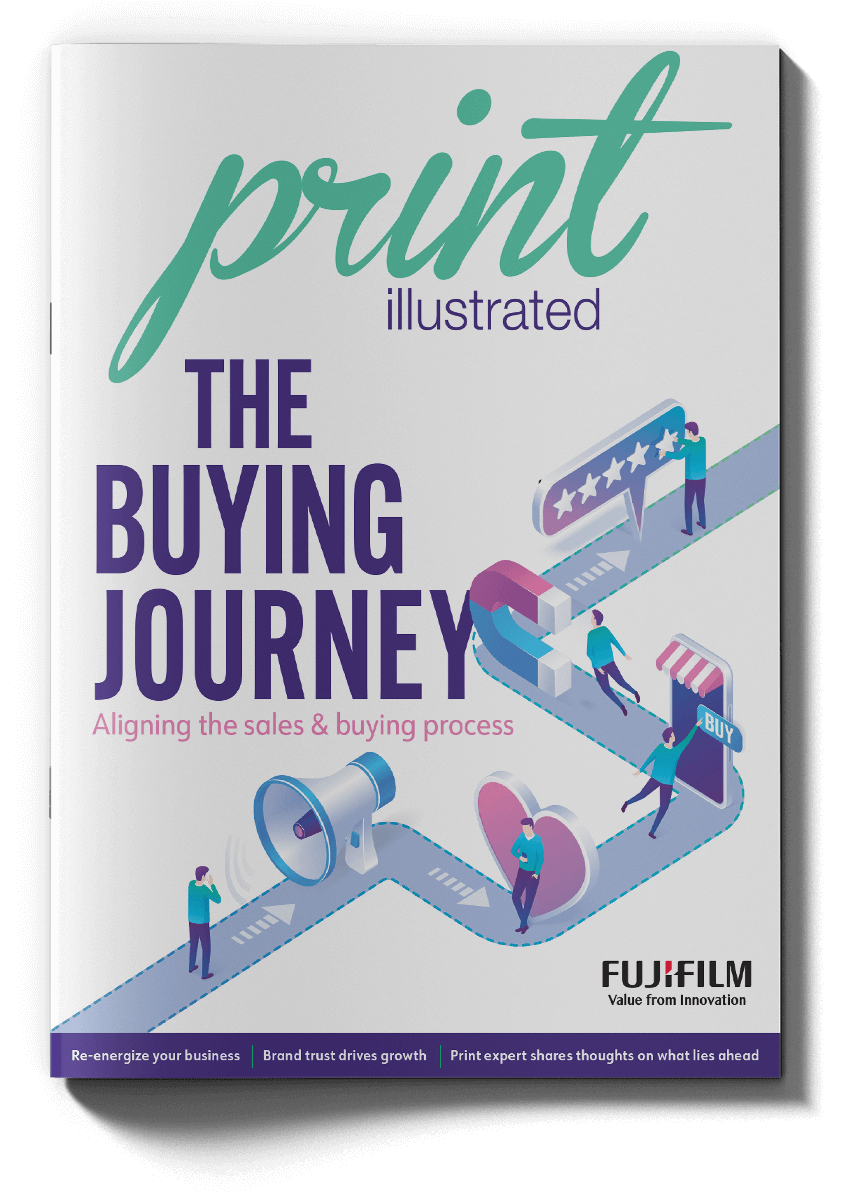A recent McKinsey study, “B2B Pulse: How B2B Decision Makers Are Responding to the Coronavirus Crisis,” revealed that the number of customers who desire working with a seller to evaluate a solution has dropped by 120% in the last three years. If you’re looking to read between the lines, the truth is that today’s customers are overwhelmed with information, diminishing the value of the seller and making it almost impossible to break through the noise and get a meeting.
But before your print shop settles into the fact that the best way to get in front of prospective customers is to have a plan to break through the noise, understand that sometimes the sales process and buying journey are as simple as the reputation your company portrays through the most practical approaches.
Take the significant monthly piece of business that Hudson Printing closed recently in less than a week. Owner and CEO Paul Hudson admits that by the time the principal decision maker reached out to him via LinkedIn, the customer already had decided to go with Hudson. And get this—Hudson had no idea they were even looking at his company. “None of my sales reps had sniffed this out or ever made contact with the customer before. No RFPs. No lengthy contract negotiations. No posturing. The conversation was, ‘We admire Hudson’s reputation; we’d like to make you one of our key suppliers.’”
The only other steps in the buyer journey for the Hudson team was meeting the parameters of the project, i.e., pricing, job details, etc. The final touch was a promise to run a test and start moving work as soon as the customer was ready.
“What are my buyers doing? What is affecting them? How are they managing? You have to ask the questions. If you do, many times, the buyer will tell you, so put yourself in their shoes.”
– Deidre Acord, Owner/VP Sales, Capital Printing Company
In a time of unprecedented—and globally historic circumstances—the new days of selling and prospecting from today’s printers are unlike anything the industry has even seen. Truth be told, the old ways are minimally effective. “People do not want to be contacted in the same ways,” Hudson says. “Few are interested in donuts or bagels anymore. Most inquiries, calls and emails go unanswered. And all contacts are inbound.”
In today’s up is down landscape, print buyers decide when and how they will contact you. The only thing for sure is that when they reach out, they have a problem they need solved, and most likely already have determined you are their solution. “Today’s customers determine trustworthiness based on online reputation, research, published content and word of mouth,” Hudson says. “This is a ‘no touch’ environment. Because of the current paper and supply chain environment, it’s not only about price. Competitive pressure based on price has only temporarily eased.”
Tom Stanfill, founding partner of ASLAN Training & Development, and author of “Unreceptive: A Better Way to Sell, Lead, and Influence,” says that the best way printers can help their customers through the process is to build the journey around helping them make the best decision versus how they want to sell. The key is learning the personas that your salespeople come up against on any given call.
“At the simplest level, there are customers who are open and receptive to meeting and listening to sellers, and there are customers who are emotionally closed,” Stanfill says. “Either the subject is closed or the door is closed. This matters because sellers need to understand there are two distinct strategies needed when the customer is closed.”
Other personas include levels of buyers in the organization (end user, director and executive), as well as understanding the political structure when decisions are being made (evaluator, coach, influencers and decision maker).
“The most common issue a salesperson is going to face today is prospecting—getting meetings with new customers,” Stanfill says. “The success rate is less than 2%, and declining. This is due to the flood of information in the market, which not only is a barrier to getting meetings but also hinders a seller’s ability to influence.”

Let’s chat it out
During the first year of the pandemic, Deidre Acord says that panic had everyone running around looking for ways to sell. One of the keys that helped Acord and her team at Capital Printing Company was to take a deep breath and slow everything down.
“We can’t be boxed in by fear,” says Acord, owner and VP of sales. “I personally had to slow down and think: What are my buyers doing? What is affecting them? How are they managing? You have to ask the questions. If you do, many times, the buyer will tell you, so put yourself in their shoes.”
Throughout the continually changing landscape, Acord has used a technique she calls, “Chat Opportunities.” One of her favorites is the Chat Card, which she sends out to customers via email and social media. The strategy lists five different ways to engage with her customers, including Curbside with Coffee, telephone, email, Zoom or a plant visit.
“We tend to stick to what is comfortable,” Acord says. “For example, we do business with a brewing company, so many times, we offer to meet clients at their businesses. It gives us an opportunity to support them.”
“People do not want to be contacted in the same ways. Few are interested in donuts or bagels anymore. Most inquiries, calls and emails go unanswered. And all contacts are inbound.”
– Paul Hudson, Owner/CEO, Hudson Printing
Throughout the buyer’s journey, the Capital Printing team is committed to understanding what they are trying to accomplish with each customer, and then building a plan based on goals, timelines, etc.
As a longtime thought leader and sales expert, Stanfill says that technique is key to hitting your ultimate goal of building a longstanding relationship, not a one off. “Sellers need to be ‘other-centered.’ They need to understand what’s on the decision-maker’s whiteboard and demonstrate their desire and ability to help them solve their problem.”
As Stanfill says in his book, when sellers shift the focus from crafting the perfect message to creating receptivity, they flip the entire art of selling on its head and form lasting relationships that set them and their customers up for lasting success.
In the end, that is the truest path in the buyer journey.
3 ways your print sales team can guide customers through their buying journey
No. 1 — Problem solving
When a prospect reaches out to your company, you must be ready to help solve the problem.
No. 2 — Marketing
Trust your ratings. Trust your content online. Have a solid foundation of market leadership. These are all things that your company must do continually (not so much the individual rep, but the company overall). Without this, the only inbound traffic is word of mouth which, while important, only casts a small net. Today, everything is inbound and authenticity is key.
No. 3 — Relationship building
Once inbound leads are converted and become customers, it is all about maintaining the relationship of trust in the traditional ways, i.e., good product, good communication and no surprises.

